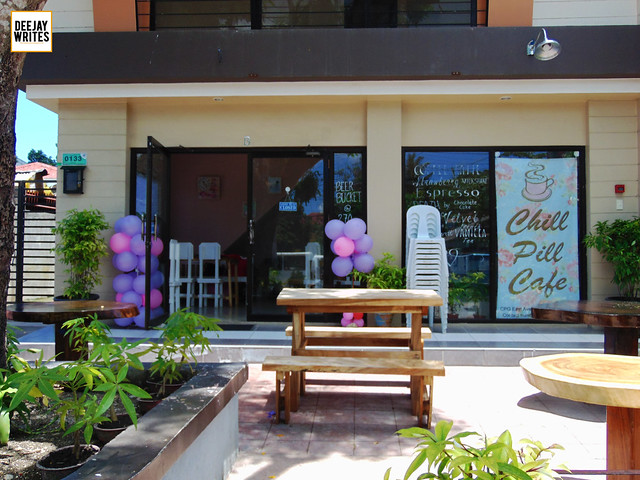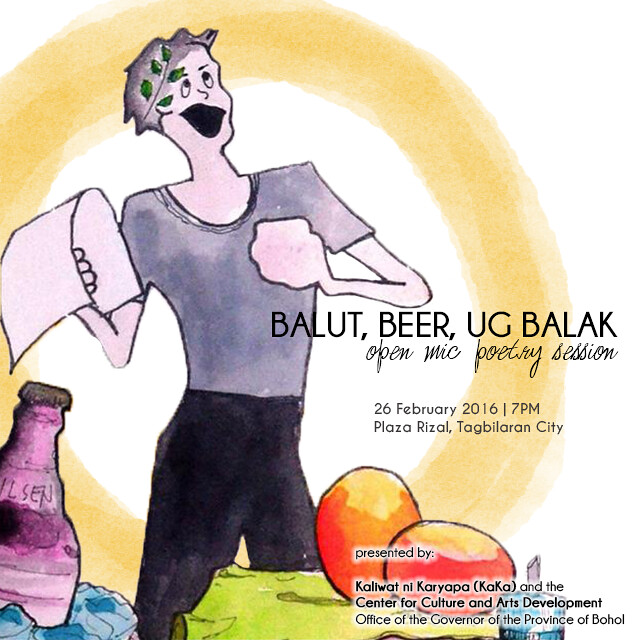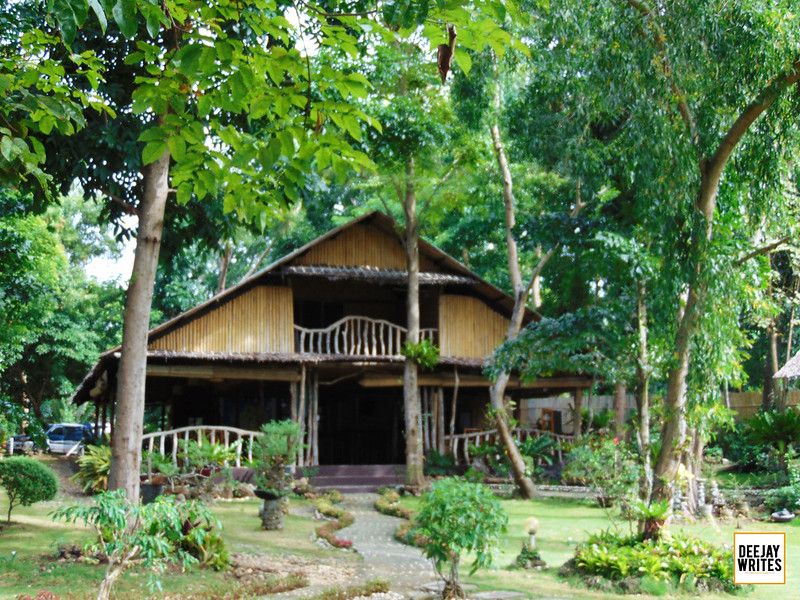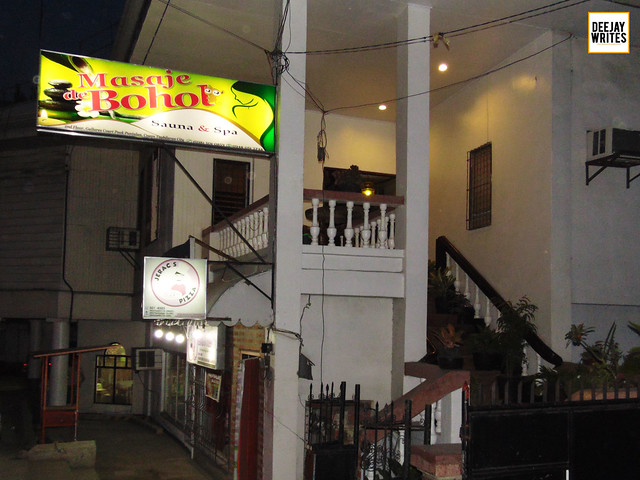#BEHOLDBOHOL: The Mystery of Lamanoc
9:00 PMDuring the Blogger Activity held last December 20 and 21 in Anda was a stop over at the mystic island of Lamanoc Island. While its name may sound really traditional and without any spooky connotation, the island, according to locals, is as mysterious and enchanting as it is breathtaking.
From the drop off site to Lamanoc, my eyes were welcomed by a calm sea and a long stretch of lush mangrove forest, which, as I was told, spawns kilometers of land area. From there, we had to go down for a bit using a stairway carved from the rocks until we reached the starting point of the boardwalk.
 |
| A view of the limestone pinnacles found in Lamanoc as seen from our drop off site. |
 |
| A crappy panorama of my view from the drop off site |
 |
| I took this from the comfort room. |
The boardwalk is made solely of wood, majority of which is bamboo, tied together by nylon strings. The entire structure is sturdy; some parts, however, could be a little bit scary. The compensating factor there is is being in the presence of nature as I walk along with the clear sea water below you and the mangrove trees on the sides.
 |
| Isaac Saguit, Cebuano blogger |
GOING THERE
At the end of the boardwalk is a beach hut. This serves a port area for our journey to Lamanoc. While the height of the water is still manageable and can really be accessed by foot, it would take cost much precious time in the island aside from getting to the area soaked. So to get there, we need to ride bancas.
The bancas are maneuvered by a local using a paddle and each banca may accommodate one or two persons only, depending on the capacity of the banca. And since tourism is all about the experience, I got myself a bit wet after paddling along with the bankero. He was nice enough to assist me. Should you want to visit Lamanoc, do not hesitate to do some paddling too.
 |
| The Voice of the Philippines Season 1 finalist Kim Mainit happens to be from Anda. He went with us during the bloggers activity last December. |
While going there, I didn't waste time asking questions about Lamanoc. My bankero gleefully shared stories. Unfortunately, I'm forgetful at twenty-one. Yeah! You get the gist!
SIGHTS AND STORIES
To say that Lamanoc is a beauty would quite be an understatement. Limestones pinnacles covered by verdant trees and the ground tiled by pebbles, plus the cool sea breeze, Lamanoc is definitely a treat for me who loves adventure, nature, and a little oddity and mystery. I didn't feel any spook even though the thought is banging in my head. I was simply in marvel of Lamanoc.
Our first stop was Tangob Cave which is just a few meters away from the kiosk that welcomed us upon arriving in Lamanoc. Accordingly, fishermen seek refuge in Tangob once caught in a storm when fishing.
 |
| Isaac inside Tangob Cave. He unexpectedly appears every time I've made a click on the shutter. HAHA |
On the way to the Shaman's Cave we passed by a big fossilized clam. The clam is attached to a big rock and is partially open. At one look it looks like angel's wings, while if you look at it's opening, it's shaped like a heart. So much for Valentine's day feels!
 |
| The fossilized clam of Lamanoc |
The Shaman's Cave, our third stop, is probably the most important site to ever visit in Lamanoc. The cave has been the venue of Diwata or Pagliwata Rituals which is "a widespread spiritual belief in which spirits of nature are called or invoked for the community by a religious leader or shaman called baylan or tambalan, to aid and ensure bountiful harvest, good catch from fishing and hunting, healing from mystifying sickness, and protection from bad omen."
 |
| The view of the cave from the outside |
In return, the community offers a thanksgiving ceremony to the spirits in farms, forests, caves, and sea shores. The Shaman's Cave has been the usual spot in Lamanoc for this thanksgiving rituals as it is believed to be the fortress of the spirits of the island.
Shamans still go to the island to island, usually during the Holy Week to perform rituals. These rituals are usually aimed to renew or strengthen their gifts as shamans. Our guide told us that we can still go visit Lamanoc during Holy Week if we plan to take a glimpse as to how these rituals are performed. We simply need to ask the permission of the shaman and of course, never make any disturbance during their sacred moment.
 |
| Inside the Shaman's Cave |
Another cave that we visited was believed to be the place of refuge of a woman who was accused to be a witch. The name of the woman and the name of the cave (if ever it has a name), I forgot. Why? You get the gist. The alleged witch died in that area.
Our fourth stop would be the red hematite paintings. These are streaks of red on the rock surface on one of the limestone pinnacles. These paints were believed to be the blood of pirates who were slain by angels.
 |
| I actually thought the red hematite paintings were like the drawings of cave men. So I was frustrated when I saw that they're just that...streaks of red. |
Although there is nothing fascinating about the red hematite paintings, or so it is for me, what is totally mysterious in the area is that it is totally humid despite it overlooking an open sea with the breeze making waves and on the way up, it was just really cool. I was profusely sweating and you could see it in this video.
Our last stop in Lamanoc were the jar and boat/ wooden dug out coffins (lungon).
 |
| I find this picture very dramatic and just a beauty. |
 |
| Close up shot of the boat coffins |
We only saw a few of the jar and boat coffins. Bones are also found, majority of which are enclosed in a case made of rocks and shells and is covered by glass.
 |
| The case that encloses the bones from the boat coffins |
 |
| A lungon at the Red Hematite Paintings site |
Lamanoc Island is a beauty that most Boholanos have never heard of. And it is such a waste for people never to witness such rustic and enchanting island, which, despite the modern times, retained its mystery, adding more flavor to this scenic side of Anda.
Lamanoc Island is an archaeological, historical, and mystical treat for any tourist, with a well-preserved nature mingling with the stories and evidences of the past. Truly one of Anda's most well-kept jewel and one reason why I, and you (should, too) Behold Bohol!

















0 comments
Share your thoughts. :)